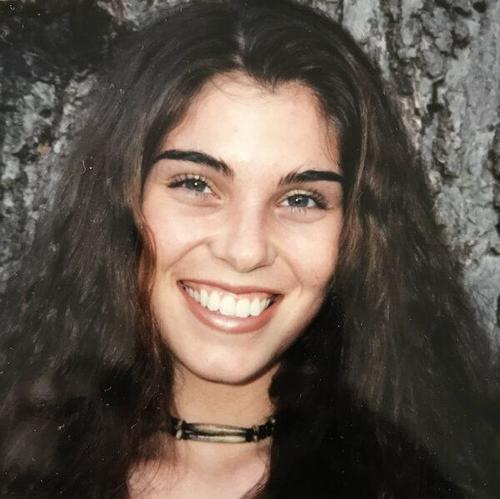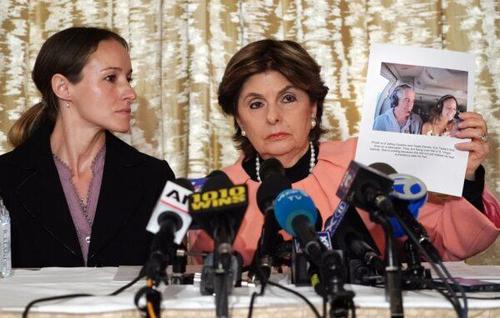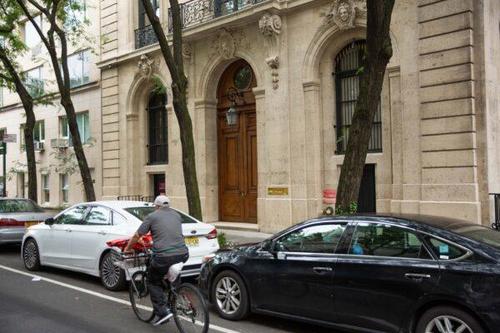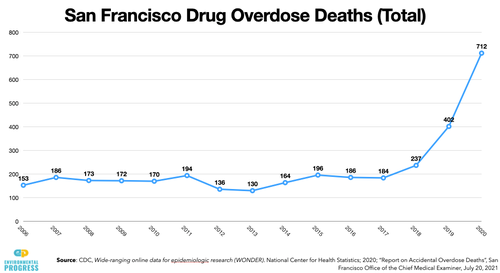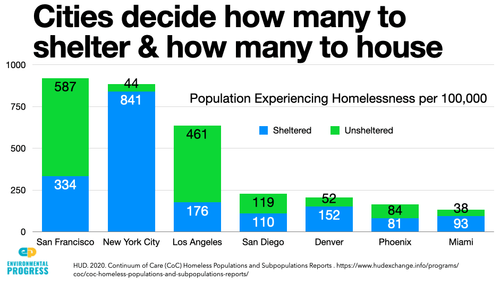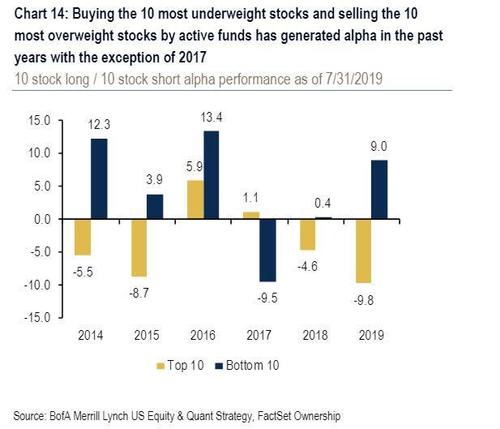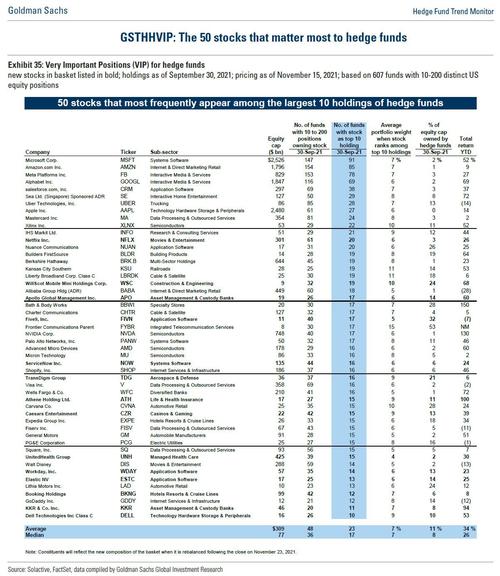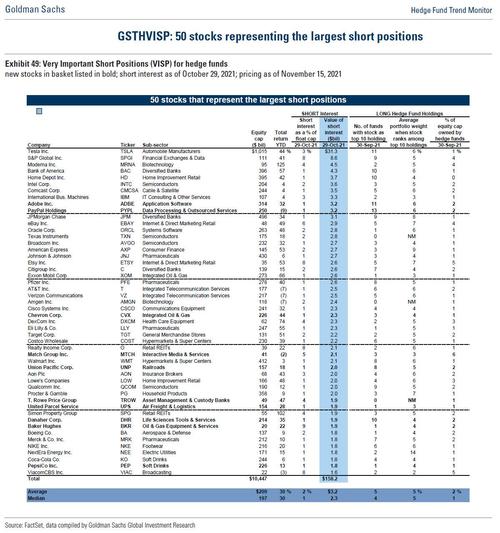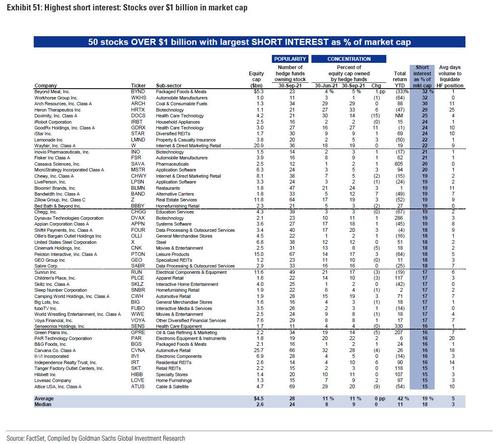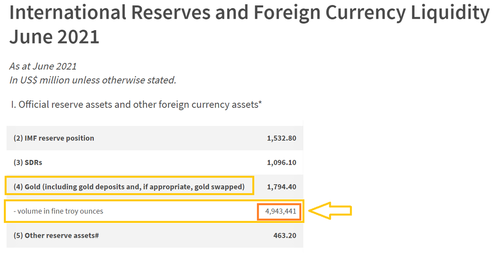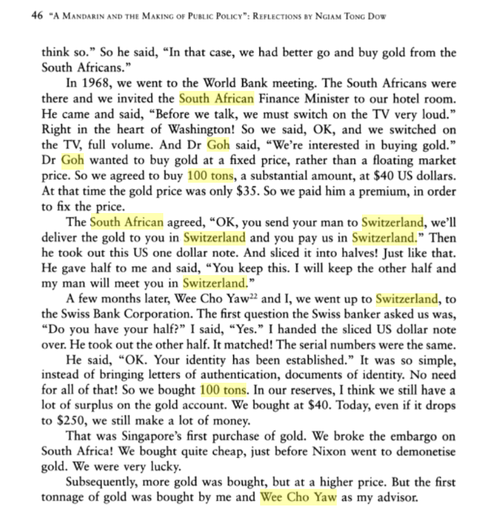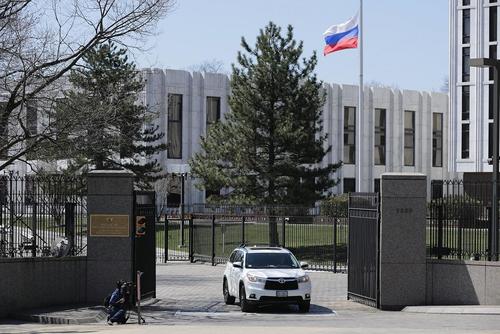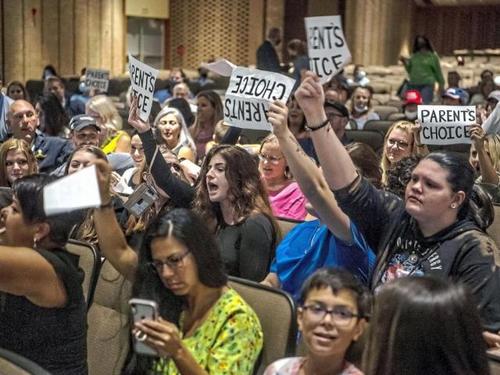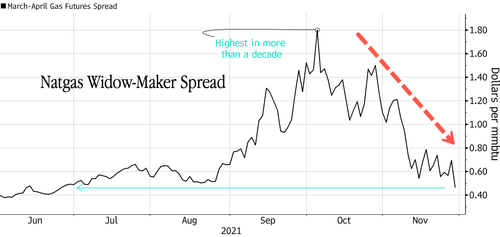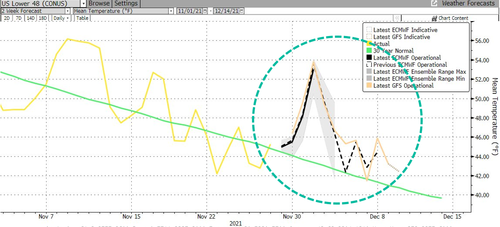Victim Hopes For Justice In Ghislaine Maxwell Trial
Authored by Charlotte Cuthbertson via The Epoch Times,
Jeffrey Epstein molested her and she didn’t tell a soul for 17 years.
Teresa Helm was 22, and she had already patched her life back together after being sexually abused by a close family member, starting at age 8.
“I really suffered in silence,” Helm told The Epoch Times’ “Insight” magazine.
As a child, she had told her mother about the abuse in the hope that she’d make it stop. Instead, her mother told her not to tell anyone, and it continued for 3 1/2 years.
“I just didn’t get help, even though I kept asking for it. And so after what happened with Jeffrey, I suffered in silence, just like I had always kind of done,” she said.
In 2002, Helm had moved to California from Ohio and was attending a massage therapy school, positive of a bright future. It became even more exciting when a fellow student, a year ahead of her, approached her about an opportunity for a traveling massage therapist job. Helm was interested and was connected with another young woman, whom she subsequently met at Santa Monica to discuss the potential job.
“We looked similar, we were at a similar age, so I connected with her,” Helm said. “I never felt like anything she was saying to me wasn’t legitimate, or I never felt fearful.”
Teresa Helm at age 21. (Courtesy of Teresa Helm)
Helm said the woman painted a phenomenal picture of what life would be like as “Miss Maxwell’s” personal traveling massage therapist—private jets, top chefs, access to the best education all over the world.
“So I’d say that she did her job very well. Because in an hour or so of walking around the boardwalk, I was like, ‘Wow. This is really great. I’m so lucky, this is meant to be.’”
Wanting to grasp the incredible opportunity, Helm told the woman she was interested, and was informed that she’d need to fly to New York City and meet Maxwell for the final interview.
Two weeks later, Helm’s travel to New York City had been arranged—flights, driver, an Upper East Side apartment to stay in, a gift basket waiting.
“I go meet with Miss Maxwell. I was expecting to give a massage because that’s what the interview was pertaining to. And everything with Ghislaine Maxwell was legitimate and pleasant, and she was very polite. Her home was stunning,” Helm said.
“I was super impressed with her because she’s this very well-spoken woman, and she’s clearly successful because of her beautiful home, and she has photos on the wall of ex-president Bill Clinton. And I’m thinking: ‘Wow, she’s really something special, she’s worked hard. She’s accomplished a lot in her life.’”
Helm spent a couple of hours in the home before Maxwell told her she was next going to meet up with Maxwell’s partner, Jeffrey.
It was the first time Helm had heard of a partner, but nothing had indicated she should feel alarmed or that she was in any kind of danger. Any red flags, she realized in hindsight, had been easily normalized and explained away.
Even when Maxwell told her to “give Jeffrey whatever he wants” during his massage because he “always gets what he wants,” Helm thought Maxwell clearly must mean, “Do a good job, because he’s had a lot of professional massages.”
“Because of my trust with [Maxwell]—she was able to create that trusting bond within me in a matter of hours—I literally walked myself to the man of the house who was going to assault me,” Helm said.
“I took myself there, because those three women did their job perfectly well and I didn’t suspect a darn thing. When I look back at the fact that three women set me up to be assaulted, it’s just disgusting. It’s a different level of betrayal.”
Helm said Epstein sexually assaulted her in his office during the interview and threatened her as she ran out of the house, her world shaking and head spinning.
Shocked to the core and full of shame, Helm returned to California the following day.
(Photo and illustration by The Epoch Times)
“The shame was overwhelming, it was paralyzing,” she recalled. “I was just so ashamed to say anything.”
Her life spiraled down, and three months later she broke her lease, dropped out of school, and returned to Ohio.
For the next five years, Helm fell into a destructive pattern. But just weeks before her 28th birthday, she found out she was pregnant, and life shifted again—this time toward the positive.
“That’s what really saved my life and turned my life around,” she said. “It was the first time I really valued myself. It was like that sense of purpose. And knowing that I was going to protect my child the way that I was never protected.
“Then after having him, I was so honored to be his mom. And then it really actually dug up, it was like, almost hatred toward my mom and Jeffrey. That first year of my son’s life was a lot of emotional processing for me. And I just wanted to kind of remove myself from the world and just be a mom. And that’s what I did.”
Helm’s son has just turned 14, and she also has a daughter who is 7. She is the full-time caregiver for both.
‘The World Shifted’
Helm, who had moved to Florida, was folding laundry one Thursday evening in July 2019 when she went online and saw a headline about Epstein after he’d been arrested for sex trafficking. She clicked the link to open the article and came face-to-face with her abuser. In that instant, she realized “Jeffrey” was Epstein.
Stunned, she sat down and googled Ghislaine Maxwell and Jeffrey Epstein.
“It was life changing, just in that moment. It was like retraumatization, No. 1. No. 2, it was like the world shifted and changed all over again. It’s been different ever since that moment, like the world changed yet again, in that moment and it has not gone back. Nor will it,” Helm said.
“Because I didn’t know there were others. I didn’t know that this was this huge thing with these people.”
The following day, after a regular yoga class, Helm sat in her car and sobbed as the emotions swirled. She decided it was time to break her silence.
The opportunity to speak out presented itself quickly.
Epstein was found dead in his cell at the Metropolitan Correctional Center on Aug. 10, 2019, one month after his arrest. A medical examiner ruled it a suicide by hanging nine days later.
The New York judge, Richard Berman, would be forced to dismiss the charges against Epstein—which included the sex trafficking of dozens of minors from as early as 1995—but not before he allowed survivors to speak.
Twenty-three women spoke in the courthouse on Aug. 27 about being sexually abused by Epstein, either in person or through a lawyer.
“I’m coming forward because it is time to bring light to that darkness, and it’s time to replace that darkness with light,” Helm said that day. She had only decided that morning to speak out and use her name publicly.
Another survivor, “Jane Doe 9,” said she was 15 when she met Epstein, in 2004.
“I flew on Jeffrey Epstein’s plane to Zorro Ranch, where I was sexually molested by him for many hours.” she said through a lawyer. “What I remember most vividly was him explaining to me how beneficial the experience was for me and how much he was helping me to grow. Yikes.”
Epstein’s Zorro Ranch is in New Mexico. He also owned multimillion dollar properties in New York, Florida, and France, and his own islands in the Caribbean, Little St. James Island and Great St. James Island. Epstein has been linked with a veritable who’s who of the fashion and political worlds.
Attorney Gloria Allred (R) and her client Teala Davies, who claims to have been a victim of sexual abuse by Jeffrey Epstein when she was a minor, at a press conference to announce a lawsuit against Epstein’s estate, in New York on Nov. 21, 2019. (TIMOTHY A. CLARY/AFP via Getty Images)
Chauntae Davies also spoke in the courtroom.
She said she was recruited by Maxwell while doing a massage apprenticeship.
“Upon my first meeting her, I wouldn’t know I had been recruited until many years later, when I would read it in a headline,” Davies said.
She said Maxwell and Epstein took her in, sent her to school, and gave her a job.
“They flew me around the world, introduced me to a world I had only dreamt of and made me feel as though I had become a part of their family—another thing I was desperately searching for,” Davies said.
“But on my third or fourth time meeting them, they brought me to Jeffrey’s island for the first time.”
Davies said a knock on her door late at night indicated that Epstein was ready for another massage, so she hesitantly went to his villa.
As Epstein began his assault on her, Davies said she told him, “No, please stop.”
“But that just seemed to excite him more. He continued to rape me, and when he was finished, he hopped off and went to the shower.”
Davies said she ran out of the villa, cried herself to sleep, and then spent two weeks in a Los Angeles hospital throwing up from a neurological disorder that manifests into violent vomiting attacks, largely triggered by stress.
“Jeffrey’s abuse would continue for the next three years, and I allowed it to continue because I had been taken advantage of my entire life and had been conditioned to just accept it.”
A protestor holds up a sign of Jeffrey Epstein in front of the federal courthouse in New York City on July 8, 2019. (Stephanie Keith/Getty Images)
Maxwell on Trial
Helm had finally broken her silence, and it was a watershed moment.
She didn’t get to see Epstein face his charges, but she’s eager to be in court to see Maxwell face hers.
FBI agents arrested Maxwell at her New Hampshire estate on July 2, 2020. She has been in a Brooklyn jail since. Bail has been denied several times, with Judge Alison Nathan ruling that she is a flight risk. The trial was originally set for July, but was delayed until Nov. 29 and is expected to last six weeks. Jury selection began on Nov. 16.
Maxwell is charged with sex trafficking children, perjury, and the enticement of minors while she was a close associate of Epstein, according to a superseding indictment filed in the Southern District of New York on March 29.
“In particular, from at least in or about 1994, up to and including at least in or about 2004, Maxwell assisted, facilitated, and contributed to Jeffrey Epstein’s abuse of minor girls by, among other things, helping Epstein to recruit, groom, and ultimately abuse victims known to Maxwell and Epstein to be under the age of 18,” the indictment alleges.
“Moreover, in an effort to conceal her crimes, Maxwell repeatedly lied when questioned about her conduct, including in relation to some of the minor victims described herein, when providing testimony under oath in 2016.”
Virginia Giuffre (formerly Virginia Roberts), one of Epstein’s most well-known accusers, claimed in a 2016 deposition that she was directed by Maxwell to have sex with a number of rich and powerful men, including “foreign presidents,” a “well-known” prime minister, and “other world leaders.”
None of the men Giuffre named in the documents have been charged, and all have denied the claims.
A court officer stands outside a Manhattan courthouse where media have gathered for the arraignment hearing of Ghislaine Maxwell in New York City on July 14, 2020. (Spencer Platt/Getty Images)
Maxwell, often described as a British socialite, maintains her innocence on all charges and in a 2016 deposition claimed she had no idea Epstein abused young girls.
During the deposition, Maxwell was asked: “Did Jeffrey Epstein have a scheme to recruit underage girls for sexual massages? If you know.”
She replied: “I don’t know what you’re talking about,” according to the transcript. “I never saw any inappropriate underage activities with Jeffrey ever.”
Maxwell acknowledged that former President Bill Clinton traveled on Epstein’s plane, but denied introducing Britain’s Prince Andrew to underage sex partners.
“I’m ready for this trial to start,” Helm said.
“I really aim to be there and look at her right in her face, and equally as important is for her to see me.”
Helm isn’t named in the indictment and won’t be testifying, but that doesn’t matter.
“I’m hopeful that there will be justice in this, that she will finally be held accountable and finally be sentenced for crimes that she has committed and for the lives that she has just willingly stepped in and ruined. This is a woman that changed the entire trajectory of my life and not for the better.”
Helm said she hopes Maxwell is found guilty on all charges and receives the maximum penalties.
“I don’t think for a moment that she deserves to be on the outside of a jail cell,” she said.
“I and other girls, we’re on the outside of these bars, and yet we haven’t fully regained our freedom back. So I hope she gets the maximum sentence. She doesn’t deserve any less than that.”
Helm said she often gets asked if she thinks Epstein’s death means Maxwell is now a scapegoat and is being punished for his crimes.
“No, I do not. She knew what she was doing. She didn’t think twice about doing it. She did it countless times. She did it … very masterfully, very successfully,” she said.
“You don’t help facilitate and run and orchestrate one of the largest sex trafficking rings on this globe, on this earth, without knowing what you’re doing and intentionally doing it.”
An exterior view of the Metropolitan Detention Center in New York City on July 14, 2020. (Arturo Holmes/Getty Images)
The indictment alleges that Maxwell befriended some of Epstein’s minor victims prior to their abuse, including by asking the victims about their lives, their schools, and their families. Other times, Maxwell and Epstein would take the victim shopping or to the movies, or pay travel or education expenses.
“Having developed a rapport with a victim, Maxwell would try to normalize sexual abuse for a minor victim by, among other things, discussing sexual topics, undressing in front of the victim, being present when a minor victim was undressed, and/or being present for sex acts involving the minor victim and Epstein,” the court document states.
The indictment goes on to say that in order to “maintain and increase his supply of victims,” Epstein, Maxwell, and other Epstein employees also paid certain victims to recruit additional girls to be similarly abused by Epstein.
Helm said she has tried to understand what would cause a woman such as Ghislaine to intentionally set girls up to be forever traumatized. She said she has read how Ghislaine lost her father, whom she was very close to, and met Epstein not long afterwards.
Helm said she lost her own father unexpectedly almost seven years ago.
“I still to this very day miss him incredibly, and I am not out there hurting people,” she said. “There’s no grievance, or there’s no tragedy that justifies you turning around becoming literally a monster.”
Maxwell’s lawyers didn’t respond to a request for comment by Insight.
Epstein avoided criminal charges for years, raising questions about being protected by the rich and powerful. In September 2007, he entered into a nonprosecution agreement that gave him immunity against prosecution for numerous federal sex crimes in the Southern District of Florida.
As part of the deal, in 2008, Epstein ultimately pled guilty to state charges of procuring a minor for prostitution and was registered as a sex offender. He spent 13 months in jail but was granted work release for 12 hours a day, six days a week.
The Grooming Process
Grooming and recruitment are critical steps in the sex trafficking industry.
“If you don’t have a successful grooming process, you don’t have the abuse, because it just doesn’t make it that far,” Helm said.
Jennifer Hill, assistant executive director of the Children’s Assessment Center in Houston, said her organization sees 5,000 children a year who’ve been sexually abused, both by family members or through trafficking.
And that’s just the children who have spoken up. “I think most people never, ever tell. And that’s what’s tragic,” she said.
Hill said it’s hard to discern how many children don’t report abuse, but statistics show that 1 in 4 girls and 1 in 6 boys will be sexually abused before they’re 18.
Common events—the divorce of parents, a breakup, bullying, or the death of a family member—can all make a child vulnerable. Many trafficked children come from the foster care system. But sexual abuse is the most common source of vulnerability for sex-trafficked children—70 to 90 percent of these children have a history of sexual abuse, according to anti-trafficking organization Path2Freedom.
Hill said the grooming and recruitment process takes different forms, but involves getting access to the intended victim and gaining their trust so that eventually they’ll be willing to listen to that person, and that person has some control over their behavior.
For children, it can include buying gifts, listening to their problems, or helping them in some way. These days, a lot of grooming occurs online through messaging apps or social media and gaming platforms. Post-abuse, children can be threatened to stay silent.
Hill said she hopes the Maxwell trial will spur other victims of trafficking and sexual abuse to come forward. As a former prosecutor of child sex abuse cases, she said a lot of abusers are teachers or trusted adults in the community, which can be intimidating for victims.
Her organization conducts awareness trainings for law enforcement, medical professionals, mental health professionals, teachers, and the community on recognizing and reporting trafficking.
Helm said so many lessons can be taken from the Maxwell case, “like the fact that it can be a woman.”
“That woman groomed me precisely well, beautifully. And that grooming process is so crucial for parents to identify that this is what’s happening to their children. Or for a child to think I think this might be happening to me. Because that grooming process is such a transfer of power [and] a gatekeeper to the abuse.”
During 2019, the National Human Trafficking hotline received reports of 11,500 human trafficking cases, representing more than 22,000 victims. California, Texas, and Florida are identified as the worst three states for human trafficking. In Texas alone, more than 79,000 children are being trafficked for sex, according to a study by the University of Texas at Austin.
“There’s not one single zip code in this nation, not one that is exempt from trafficking,” Helm said.
“It happens in the wealthiest of the wealthiest, to the most impoverished, and everything in between. It has exploded online.”
A residence belonging to Jeffrey Epstein on East 71st St. on the Upper East Side of Manhattan in New York City on July 8, 2019. (Kevin Hagen/Getty Images)
The Threat Online
Fifty-five percent of domestic sex-trafficking survivors who entered the life in 2015 or later met their trafficker for the first time using a mobile app, website, or text, said Tammy Toney-Butler, an anti-human trafficking consultant for Path2Freedom.
Predators ramped up their sexual enticement of minors and the posting of child sexual abuse material as schools closed and kids worked online from home in response to the COVID-19 pandemic, according to National Center for Missing and Exploited Children (NCMEC).
The number of reports of online child sexual abuse materials reported to the NCMEC during the first six months of 2020 surged 90 percent to more than 12 million, the center reported. Reports of predators enticing minors went up 93 percent to more than 13,200.
Facebook was used for most (59 percent) of the online recruitment in active sex trafficking cases in 2020, according to the Human Trafficking Institute’s annual trafficking report.
That makes Facebook “by far the most frequently referenced website or app in public sources connected with these prosecutions, which was also true in 2019,” the report found.
In June, the Texas Supreme Court ruled that Facebook could be held liable if sex traffickers use the platform to prey on children, arguing the social media website isn’t a “lawless no-man’s-land.”
The ruling was made following three Houston-area lawsuits involving teenage trafficking victims who alleged that they met their abusers through Facebook’s messaging service. Prosecutors also said that Facebook was negligent by not doing more to block sex traffickers from using the site.
The court said the victims can move forward with their lawsuits against Facebook. They claimed that the company violated the Texas Civil Practice and Remedies Code, which was approved in 2009.
Toney-Butler said the income traffickers can make from one victim can be close to $400,000 a year, and survivors have reported being forced to have sex more than 20 times a day while being six to seven months pregnant. And once a woman is over 18, she’s often seen by society as “a drug-addicted prostitute” rather than a victim of sex trafficking, she said.
A child, after being pulled into sex trafficking, “only lives for seven years before they succumb to the environment,” Toney-Butler said. Suicide, drug overdose, and violence are often the killers.
Teresa Helm (R) with three other sex-trafficking survivors, (L–R) Cathy Hoffman, Sabrina Lopez, and Nissi Hamilton, in Houston on April 24. (Kathleen O. Ryan)
The Future
Now 41, Helm is hopeful. Aside from looking after her children, she’s a fierce advocate and mentor to other survivors and a consultant to organizations and politicians to ensure laws and programs are victim-centered.
“Helping others is the ultimate payback. That I didn’t completely break forever. I’ve been broken and I have repaired myself stronger,” she said.
She referred to the old Japanese art form called kintsukuroi, or “to repair with gold,” which is the practice of repairing broken ceramics with gold, making them stronger and more beautiful than before.
“And I definitely kind of view myself as that, in the fact that I can turn around and leverage this pain into purpose and help others—that’s the ultimate thing for me, to be able to be strong enough to go out and help others, help them change their lives, help them recover their lives and recover their power.”
For Help
The National Human Trafficking Hotline is confidential, toll-free, and available 24/7 in more than 200 languages.
Call: 1-888-373-7888
Text: “Help” or “Info” to 233733
Chat: humantraffickinghotline.org
Tyler Durden
Mon, 11/29/2021 – 23:00
via ZeroHedge News https://ift.tt/3o2SoiA Tyler Durden

